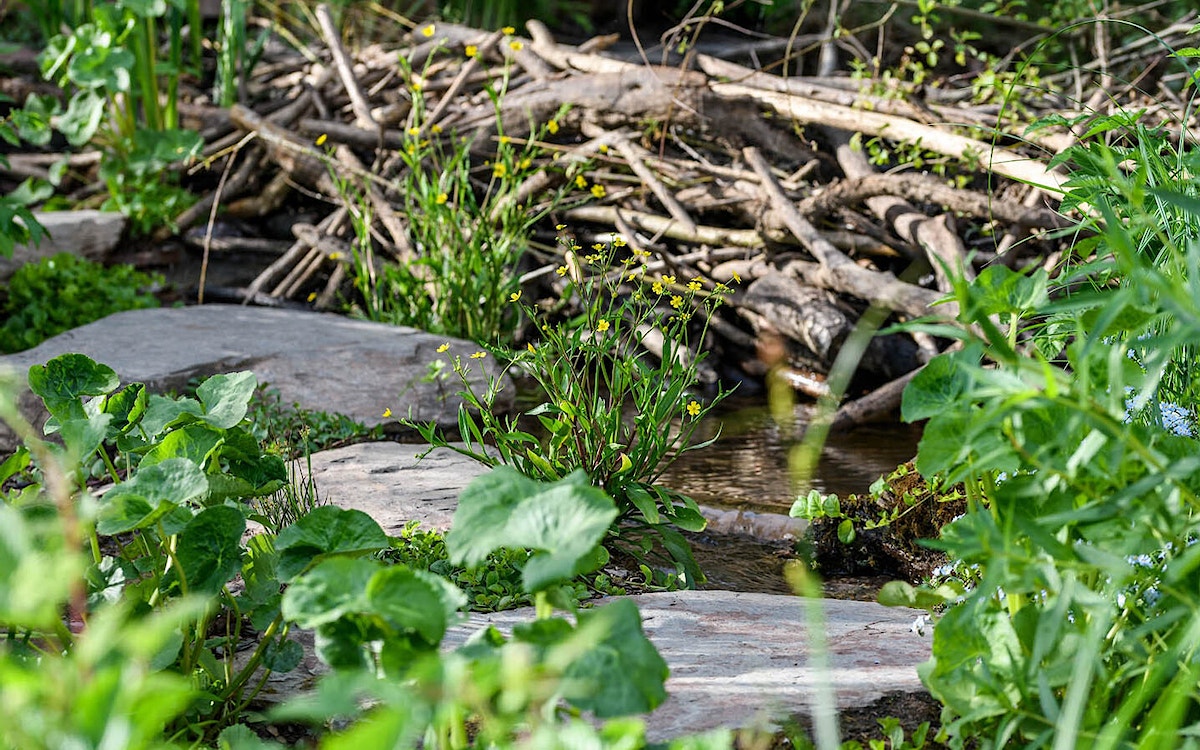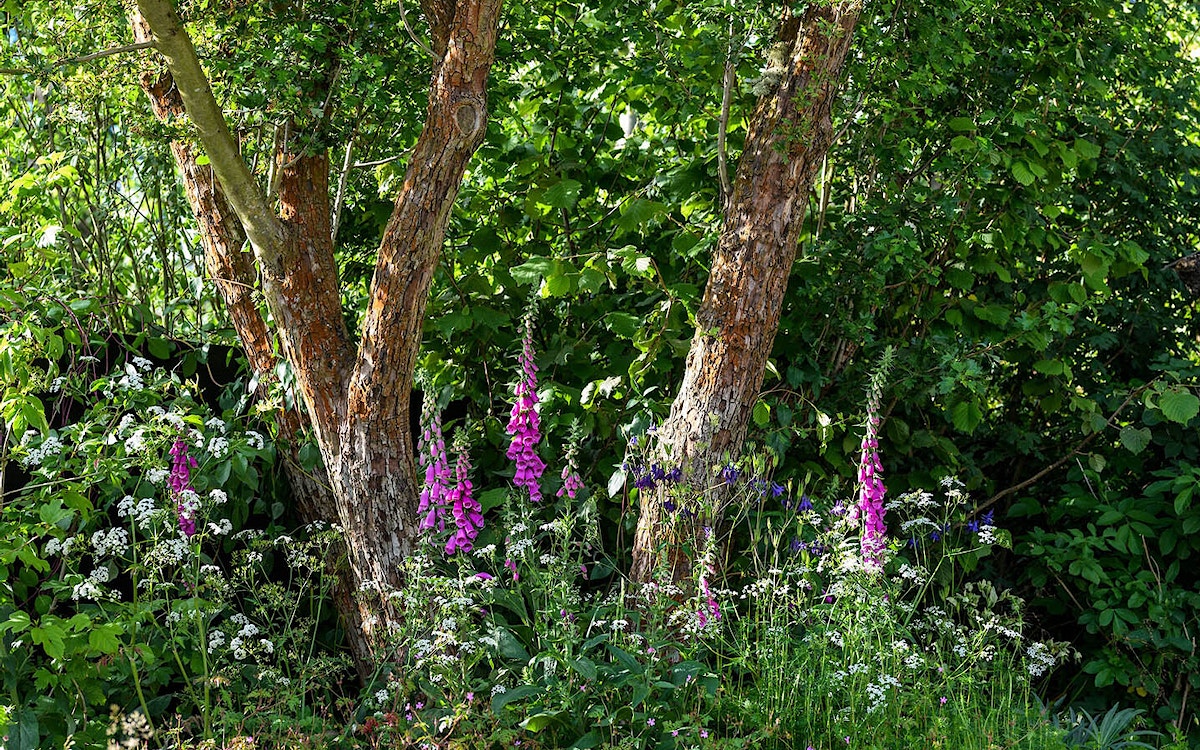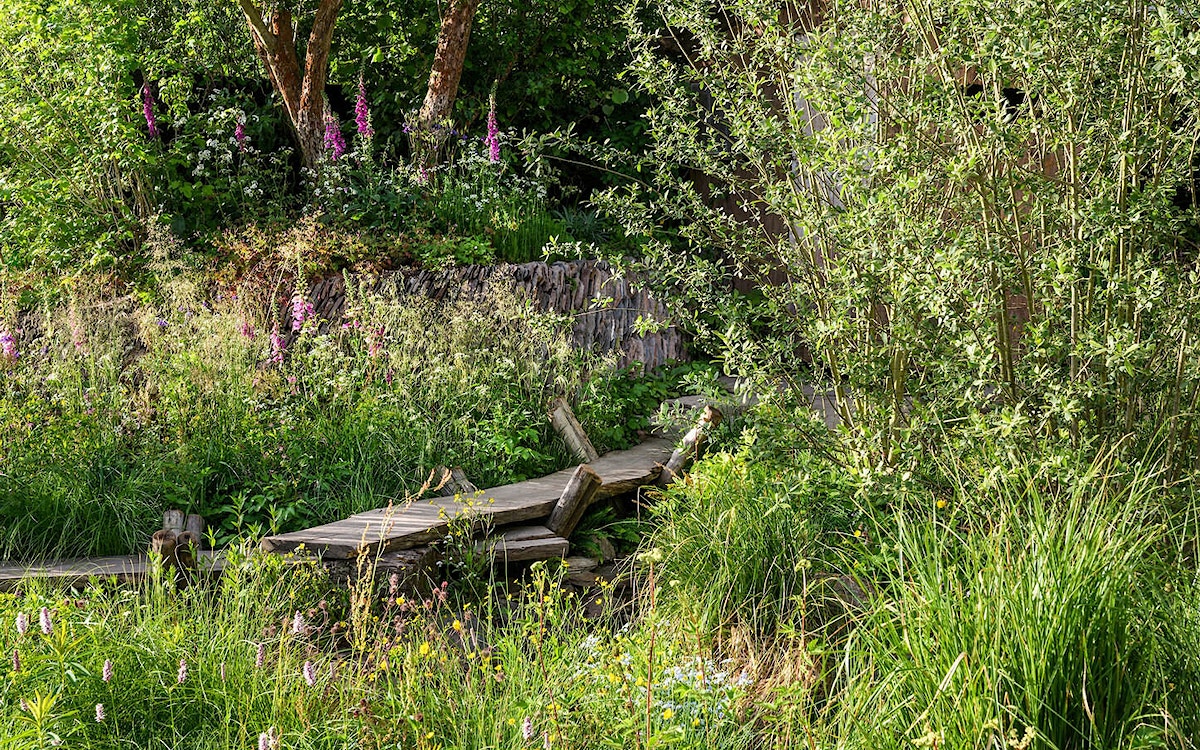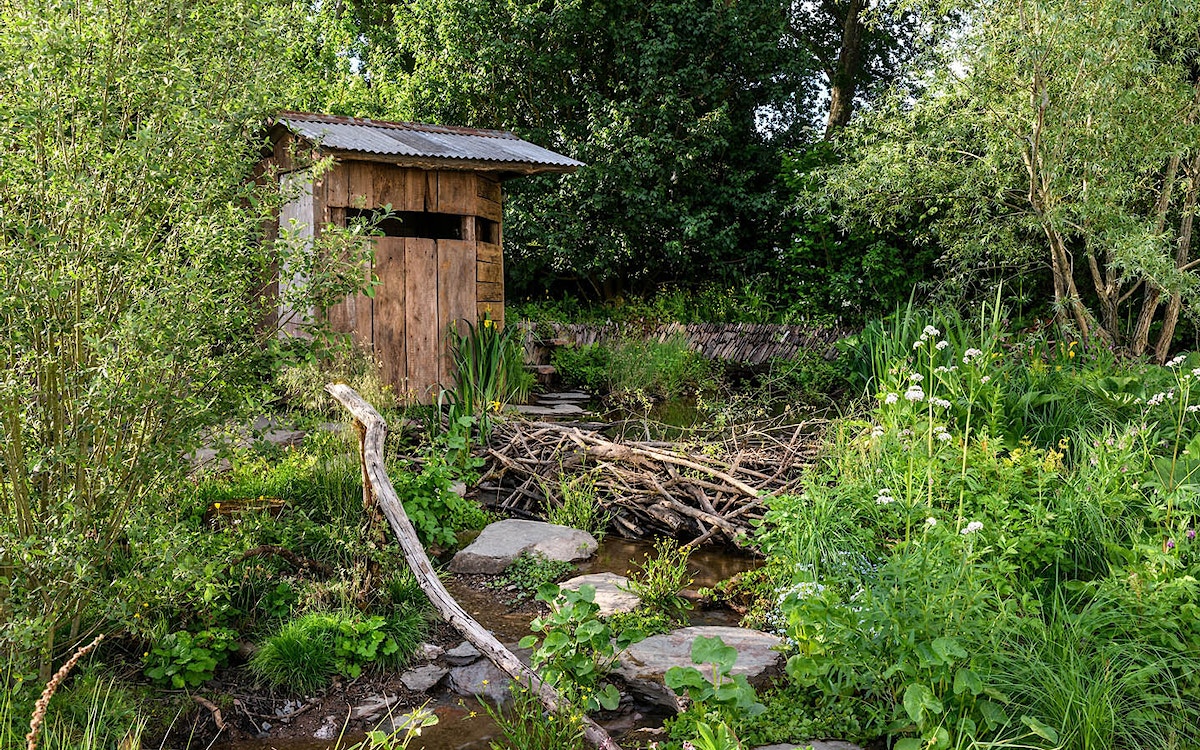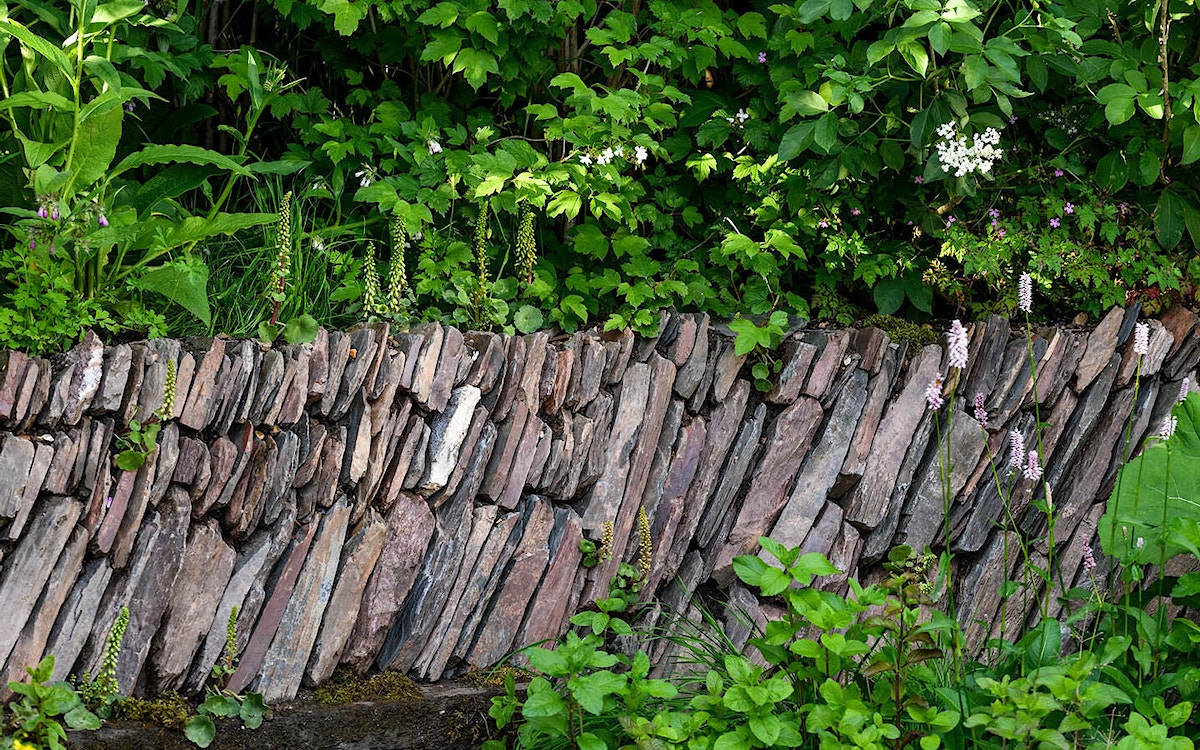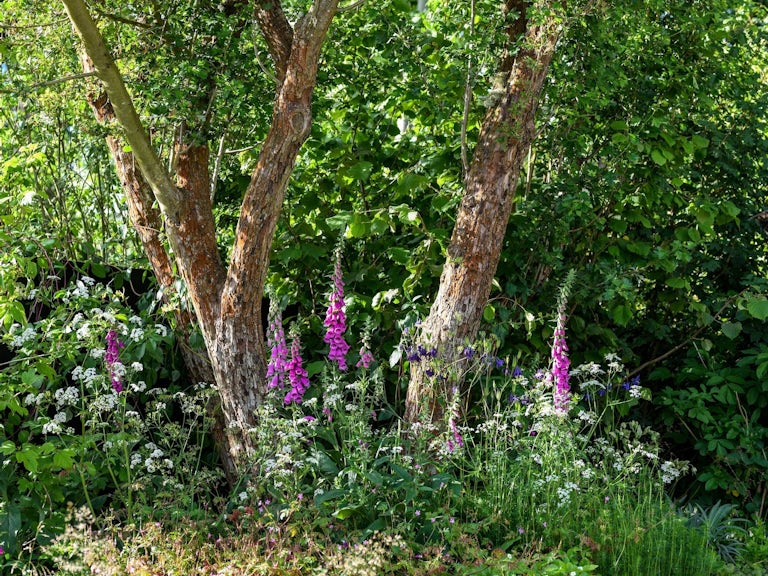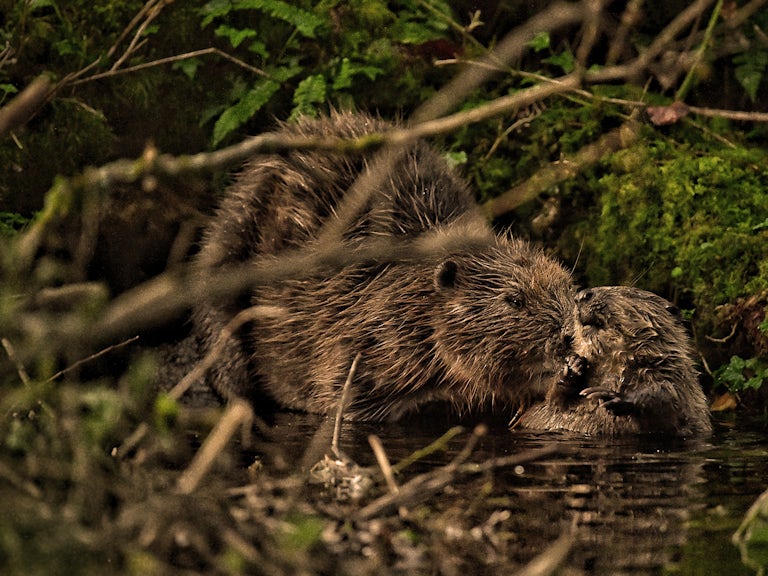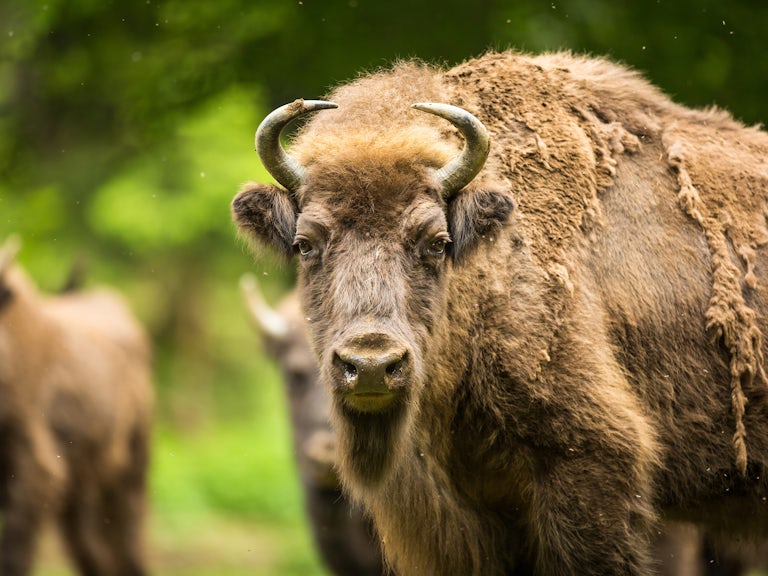Rewilding Britain at Chelsea
We teamed up with garden designers Urquhart & Hunt at the Chelsea Flower Show in 2022, and won Best Show Garden.

“We’re thrilled that Urquhart & Hunt’s inspiring garden is spotlighting rewilding’s message of hope.”
Rebecca Wrigley
Rewilding Britain Chief Executive
For the first time at RHS Chelsea Flower Show, in 2022, visitors were able to experience the amazing rewilding impact that eco-engineers such as beavers can have on reversing the loss of nature in Britain and in boosting the beauty and biodiversity of our landscapes.
Beavers are natural rewilders. Their dams create nature-rich wetlands that support many other species and act as a carbon sink, while also reducing flooding risk by holding back storm water flows.
Yet, while these habitat-creating, flood-preventing animals are the beating heart of healthy river and wetland environments across Europe, in Britain we’ve been slow to welcome them back to our countryside after 400 years of extinction.
Beavers at the heart of the story
Landscape designers Urquhart & Hunt chose to make beaver activity the core of their garden at Chelsea 2022, revealing how this keystone species is pivotal to ecosystem restoration, and showcasing how rewilding can benefit nature, climate and people.
Designed for and in collaboration with Rewilding Britain, the garden – officially called A Rewilding Britain Landscape – showed a rewilding landscape in the south west of England, following the reintroduction of beavers.
Wonderfully wild features
Here are some of our favourite rewilding features of the garden:
- A flowing brook, beneath a glade of hawthorn, hazel and field maple.
- A pool dammed by beavers – with wood-sticks, woodchip and tree debris scattered around their lodge. These are constructed from debris removed from beaver sites as part of the beaver management process.
- A riparian meadow with rejuvenating alder trees, fed by water trickling from the beaver dam.
- A dry-stone wall built in a West Country traditional style using stone from a carefully managed iron-ore quarry in Exmoor.
- An old timber walkway, made from reclaimed oak planks and chestnut poles, leading across the wetland meadow to a viewing hide at the side of the pool.
- Native wildflowers, which mingle with grasses and marginal plants along the edges of the pool and stream.
- A soundscape giving a taste of a future landscape alive with nature, including the famous tail slap of the beaver, and the creature’s mewing. Listen to the soundscape online .
Native species only
The Rewilding Britain garden features exclusively native plants. Here are just a few of the important species chosen for their contribution to nature:
- Crack willow (Salix alba), vital in preventing riverside soil erosion and supporting over 200 species of invertebrate.
- Hawthorn (Crataegus monogyna), whose bright red berries are a favourite food for many birds in winter. The tree provides a habitat for 149 insect species.
- Alder (Alnus glutinosa), which supports at least 90 insect species. Its fruit is an important food source for goldfinches, siskin and redpoll.
- Devil’s bit scabious (Succisa pratensis), providing an essential food source for the caterpillars of the marsh fritillary butterfly.
Unusually for RHS Chelsea Flower Show, in order to present as authentic a picture of a rewilding landscape as possible, native grasses are shown as one would see them in the wild, with their previous year’s growth and their pre-season seed-head remnants left on, together with the brown, former season’s dead foliage.
The garden lives on
After the show the exhibit was donated to Lindengate charity
, which has a suitable habitat (including a few ponds) where the plants will continue to thrive. They also run therapeutic garden programmes to support mental health, particularly with NHS and youth groups. Your work and support will reach into many people’s lives throughout the years to come,” says the charity’s Andy Grant.”
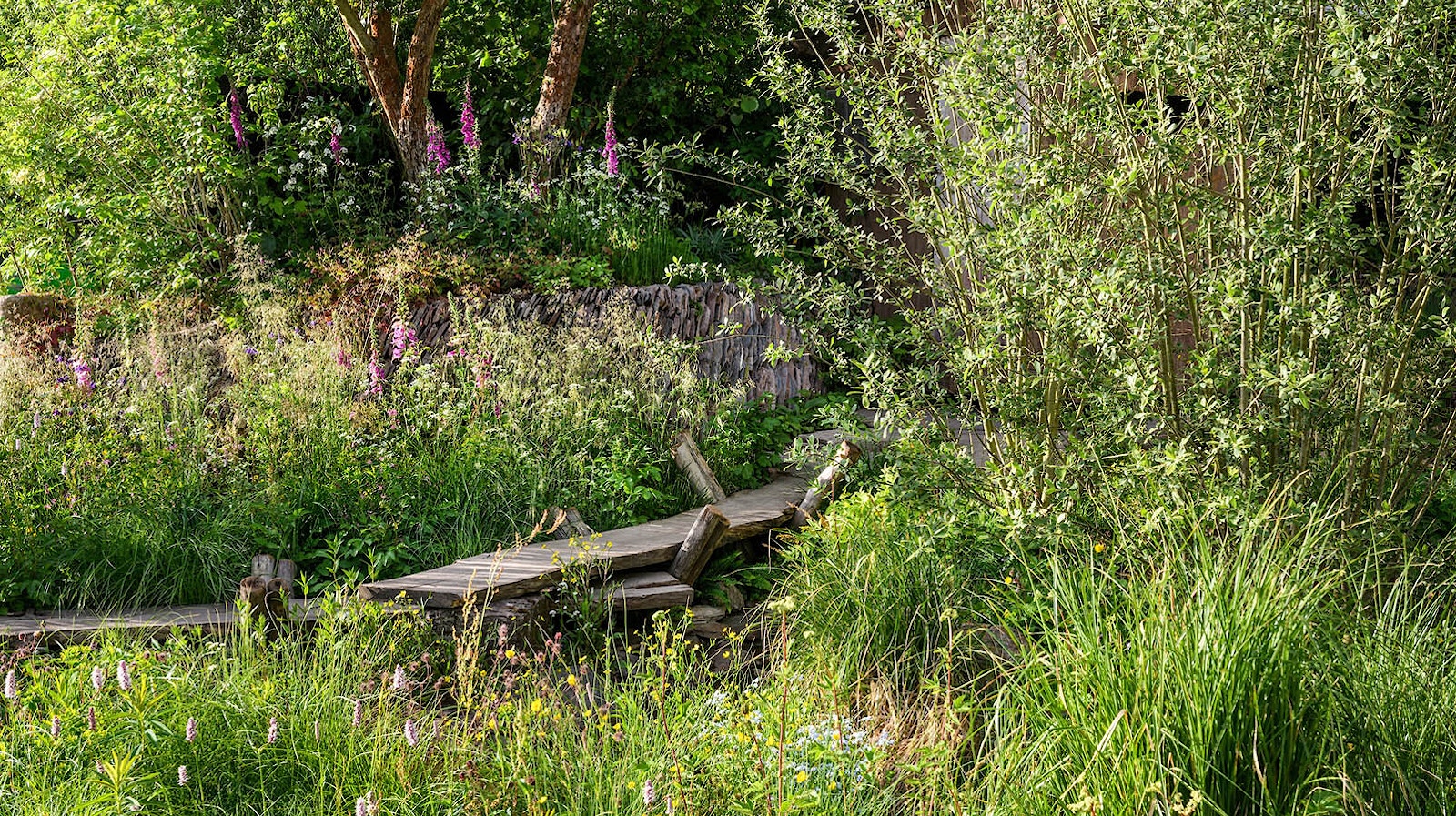
See the full plant list for the show garden
Download pdfThank you to our sponsors
The Chelsea garden
was made possible by generous support from the new Project Giving Back
initiative at RHS Chelsea Flower Show 2022.
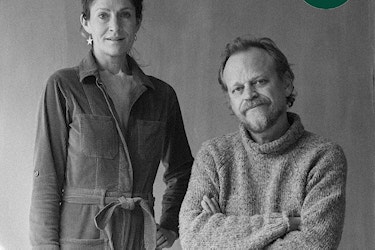
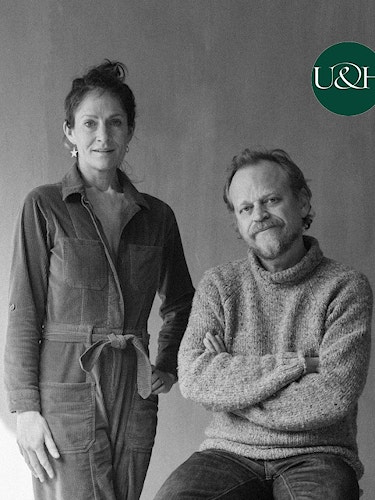
Meet the designers
Urquhart & Hunt
specialise in contemporary restorations of gardens within their wider landscapes, incorporating ecological rehabilitation and naturalised planting schemes. It is a studio dedicated to nature, alongside an impeccable design and fulfilment process.
“It is more pressing than ever for us as humans to reconnect with our own habitat, the earth, and work within the systems that hold us and give us clean air, waters, nourishment and our home,” say Lulu Urquhart and Adam Hunt. “This is our moment to bring this, in all its beauty, to visitors of the show.”

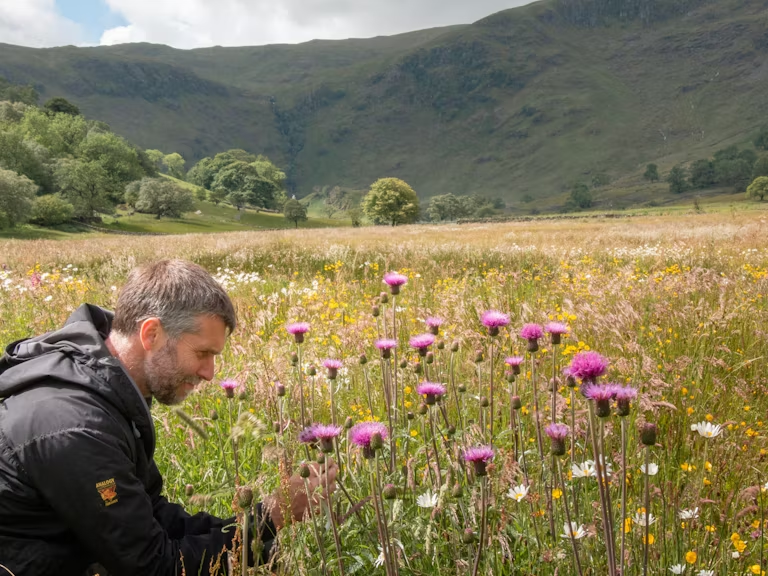

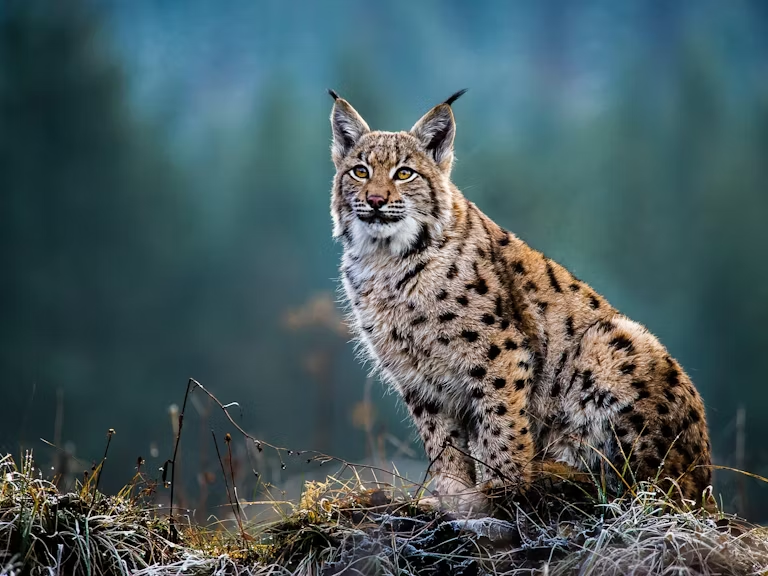
Push for change
Urge your local leaders to act wild and commit to supporting the Rewilding Manifesto.
Email your MP